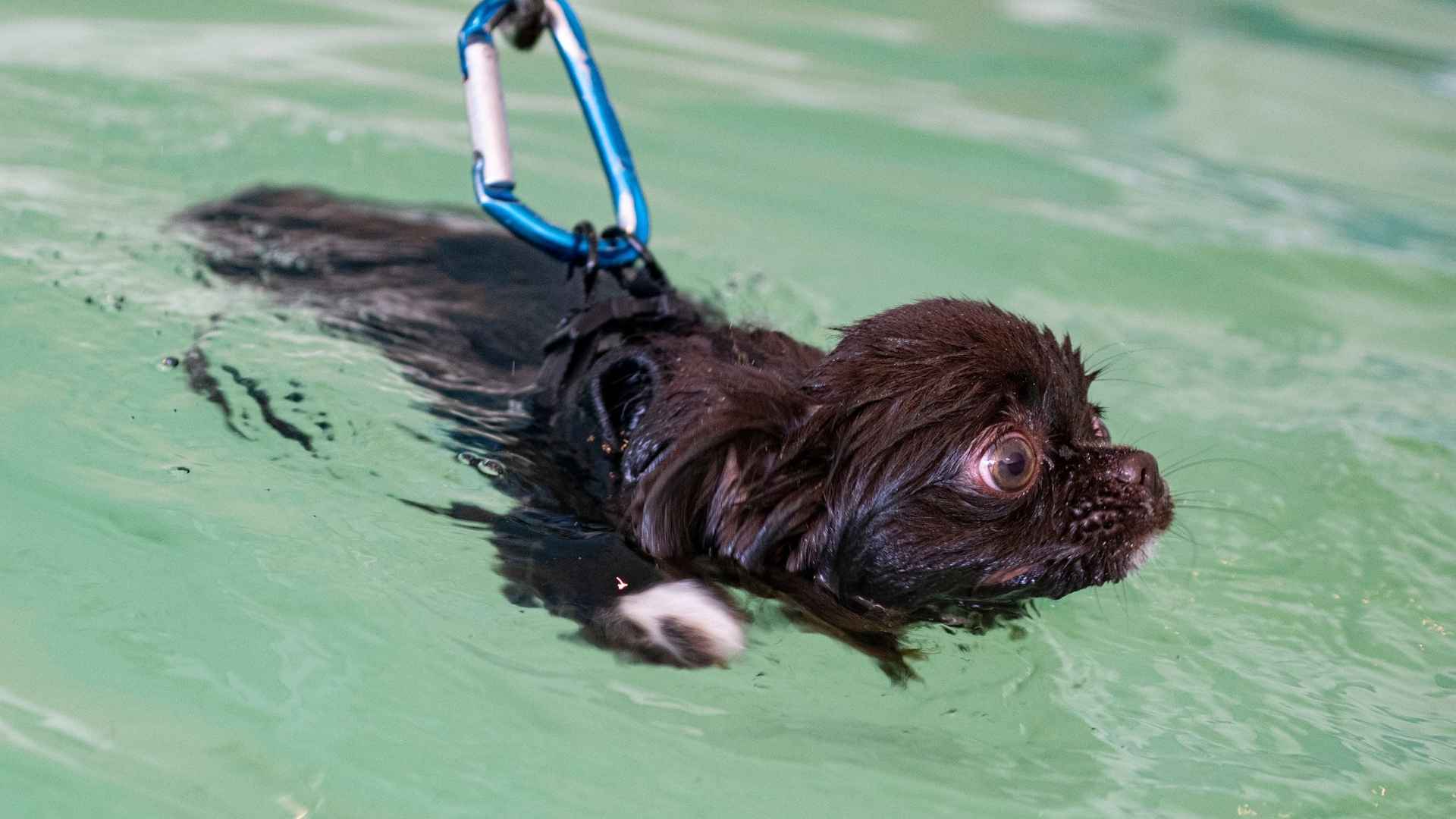Some dogs live for a splash, but others? Not so much. While canine swimmers often steal the spotlight, there’s an entire group of dogs that would rather keep their fur bone-dry. Whether it’s because of their body type, personality, or past experiences, these dogs tend to steer clear of puddles, hoses, and especially baths.
If you’ve ever tried to convince your pup that water isn’t out to get them, you’re not alone. Many breeds have a natural aversion to getting wet, and it’s not always easy to change their minds. But knowing which breeds are more likely to resist water can help you work with their instincts, not against them.
In this article, we’ll spotlight seven dog breeds that tend to dislike water. While some may tolerate it with the right training, others will give you their best side-eye at the first sign of a splash. Whether it’s for grooming, swimming, or rainy walks, these breeds are far more comfortable on dry ground.
Let’s dive into the list, figuratively, of course.
Dog Breeds That Hate Water
1. Chihuahua
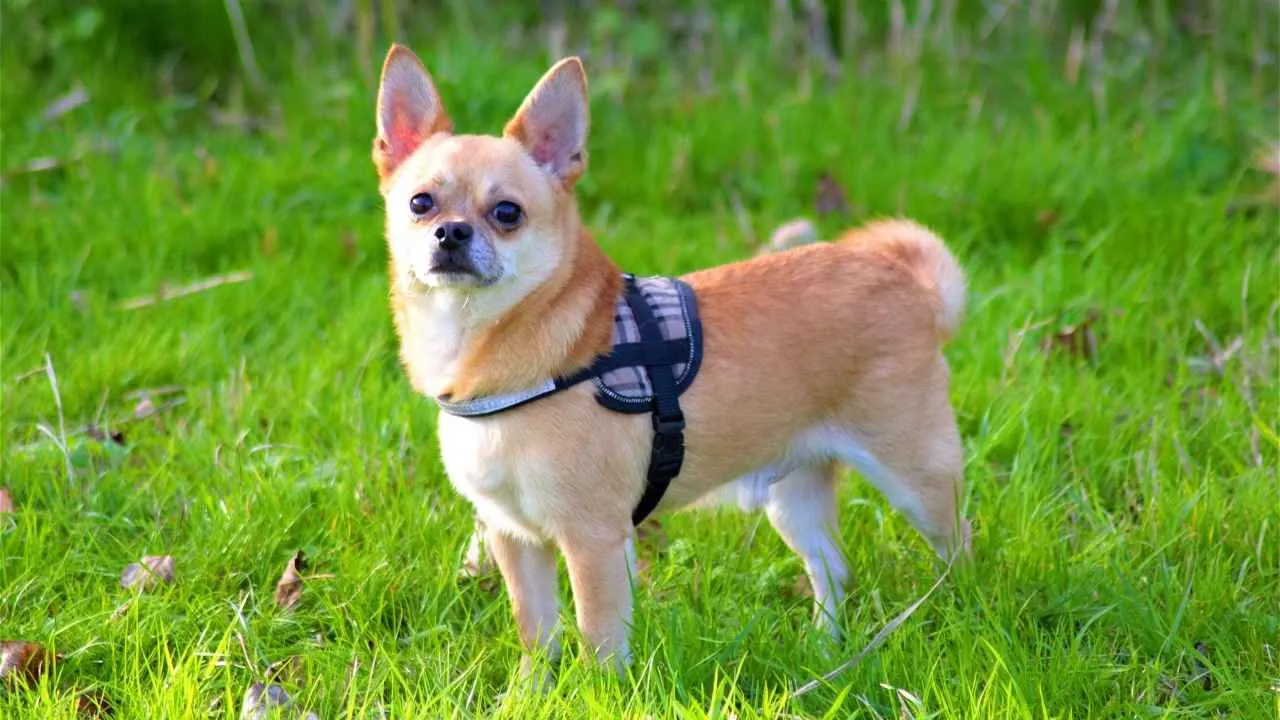
Chihuahuas might have larger-than-life personalities, but when it comes to water, they tend to be all bark and no splash. These tiny dogs often tremble even on a dry day, so you can imagine how they feel about getting wet. Whether it’s a bath or a pool, most Chis would rather stay snuggled in a blanket.
Due to their small size and short fur, Chihuahuas lose body heat quickly. Cold water makes them uncomfortable and anxious, so even a shallow swim can be overwhelming. They also tire out fast, which adds to their dislike of water-related activities.
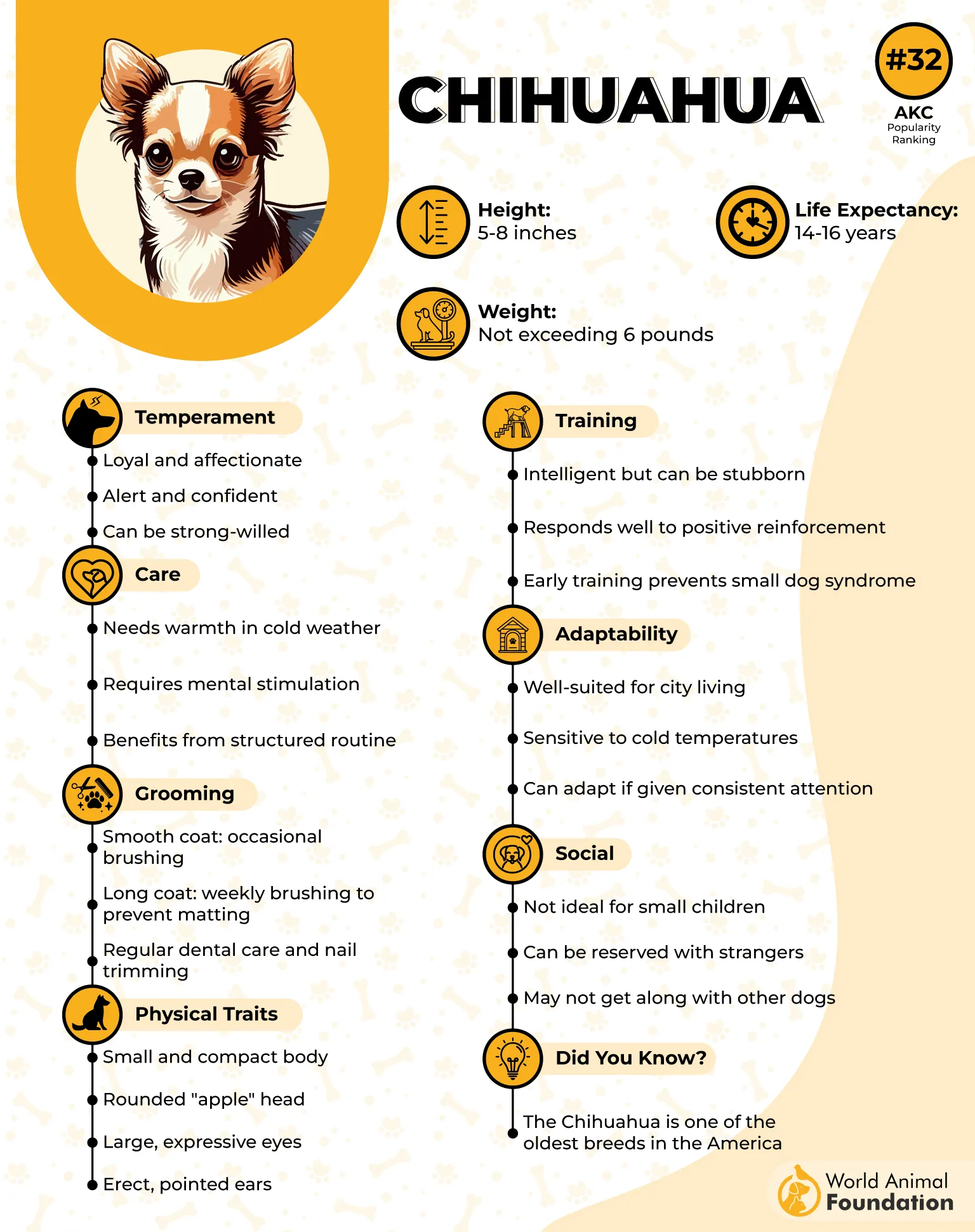
Technically, yes, Chihuahuas can swim. But that doesn’t mean they enjoy it. Their little legs aren’t built for long paddles, and their natural instincts don’t always kick in as easily as with other breeds. If introduced to swimming, they’ll need plenty of encouragement and safety gear like a life vest.
Owners who want their Chi to learn to tolerate water should go slow and stay positive. Lukewarm baths, gentle sprayers, and treats can help ease the process. But don’t be surprised if your pup still prefers dry land to doggy paddling.
If a beach day is on your calendar, don’t forget to bring a towel, fresh water, and shade for your Chi. Salty or chlorinated water can be harsh on their skin and health, so rinsing and drying afterward is a must.
Fun Fact:
Despite their water aversion, Chihuahuas can burn more calories swimming than walking—just don’t tell them that!
2. Yorkshire Terrier
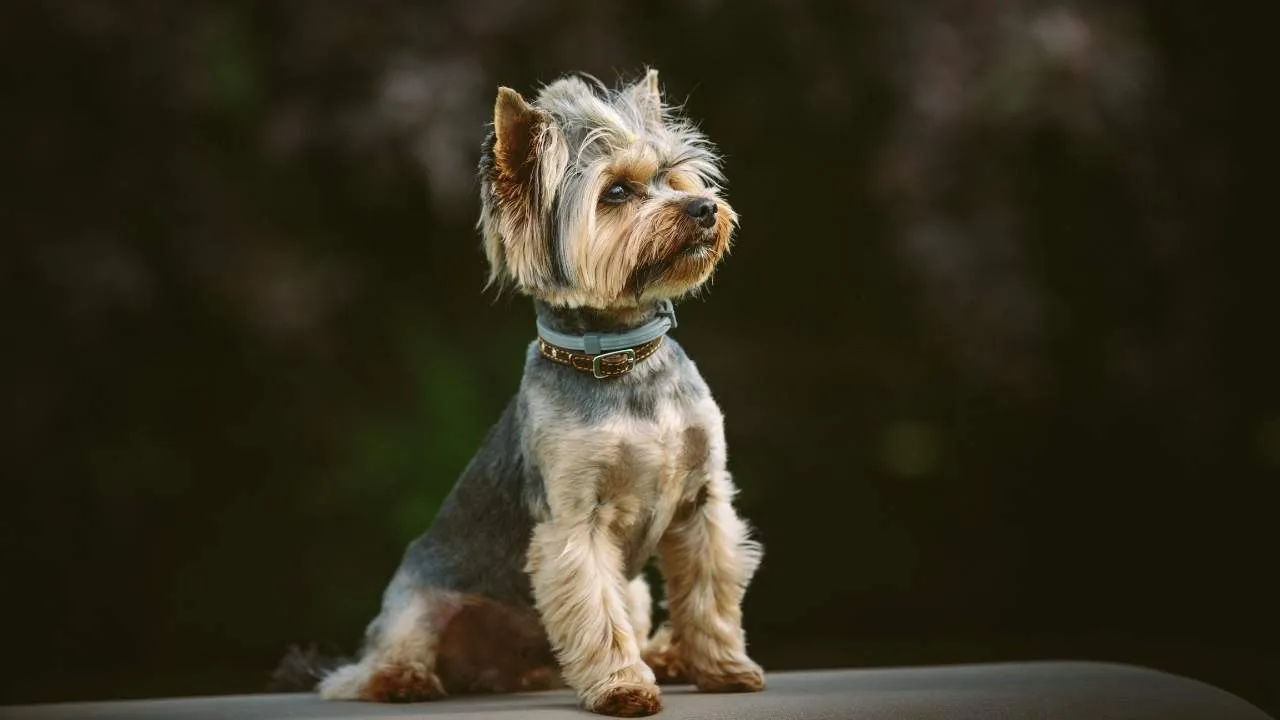
Yorkshire Terriers, or Yorkies, are known for their glamorous coats, but those flowing locks aren’t exactly made for water sports. Most Yorkies prefer staying dry, especially since getting soaked can make them cold and uncomfortable quickly. It’s not just about preference—it’s about preservation of style and comfort.
PetMD states that though they’re bold in spirit, Yorkies tend to be wary of unfamiliar environments, which can include swimming pools and lakes. Their small size and delicate frame can make the vastness of open water seem intimidating. And because they’re prone to tracheal issues, excitement combined with water splashing around their face isn’t the safest combo.
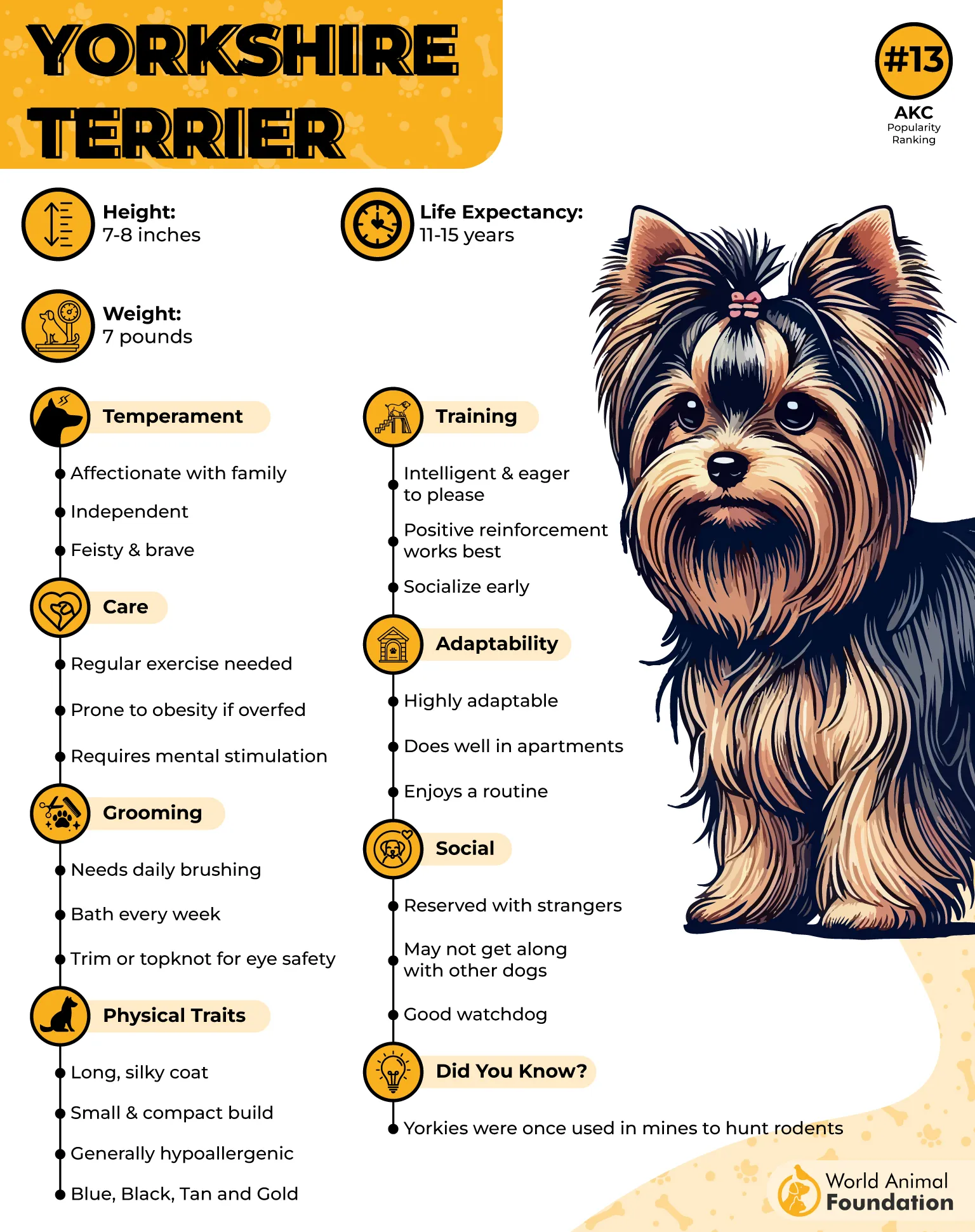
Of course, with time and patience, some Yorkies can be gently introduced to shallow water. A warm tub or a kiddie pool, paired with calm encouragement and tasty treats, may help ease their hesitation. But don’t expect them to cannonball in with Labrador enthusiasm.
After any exposure to water, drying is essential. Their hair can take time to fully dry, and dampness can lead to tangles or skin irritation. Many owners opt for puppy cuts to make grooming (and bathing) easier, though the preference to avoid water often remains.
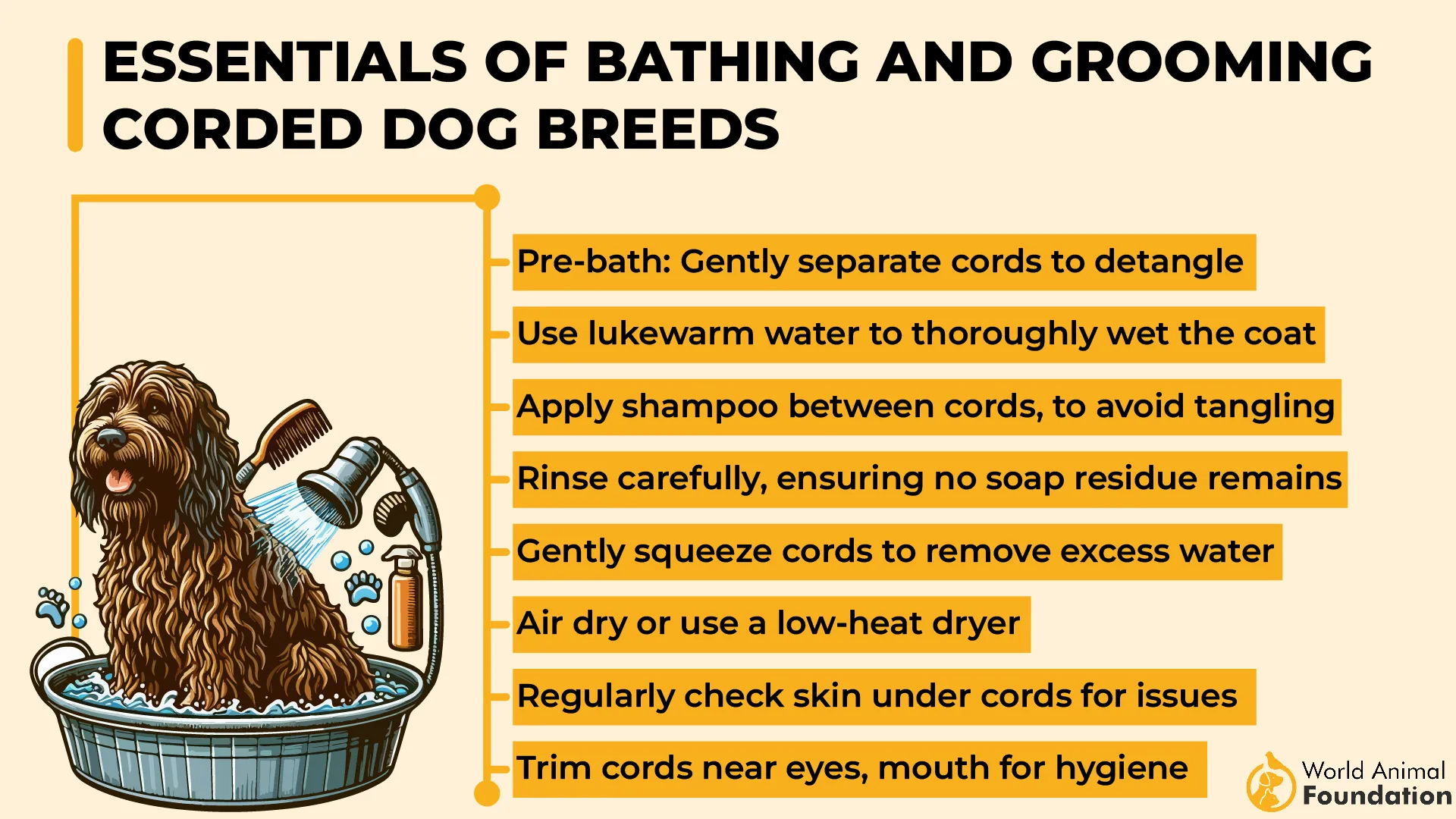
If you’re beach-bound with a Yorkie in tow, they’re more likely to enjoy sunbathing beside you or trotting across dry sand than diving into the surf. A splash on the paws? Maybe. A swim? Not unless there’s a very good reason.
Fun Fact:
The first therapy dog ever officially recorded in the U.S. was a Yorkshire Terrier named Smoky, who comforted soldiers and crawled through pipes to run communication lines in WWII!
3. Pug
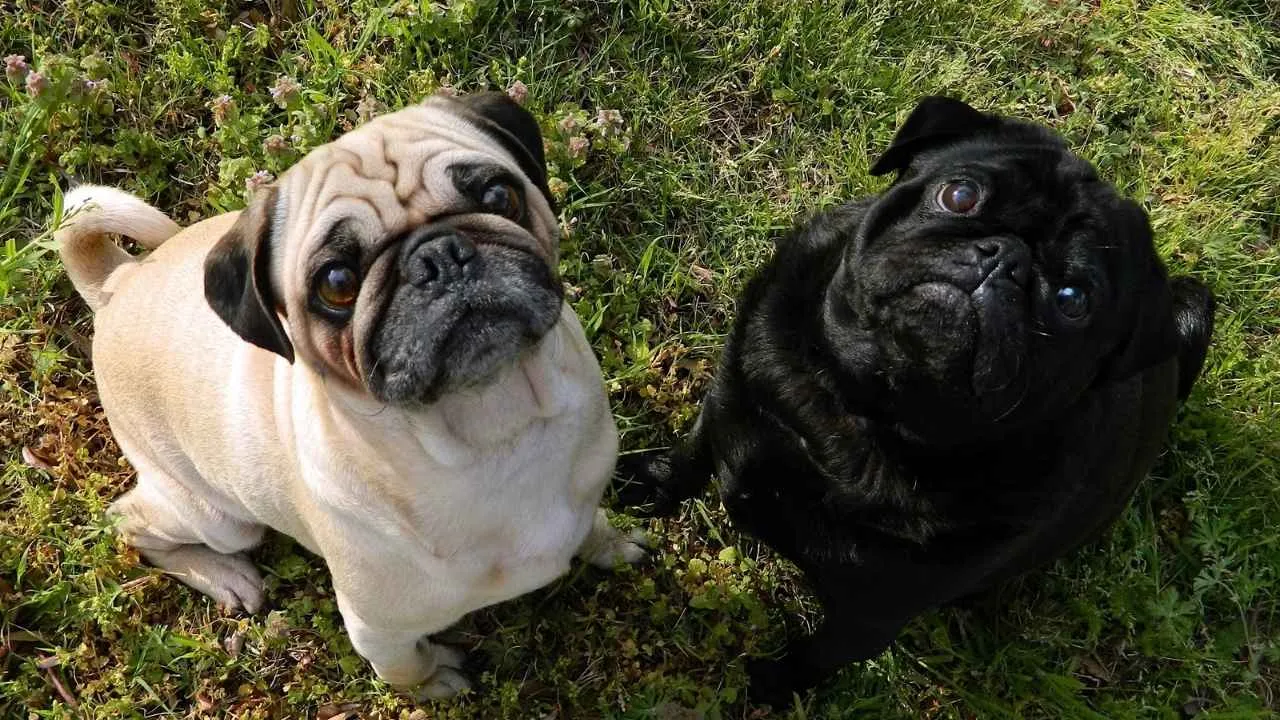
Pugs are charming goofballs with an undeniable love for lounging, but water play rarely tops their to-do list. With their compact, brachycephalic snouts and tendency to overheat or struggle with breathing during exertion, Pugs often find swimming to be more stressful than soothing.
Despite their upbeat personalities, most Pugs are better suited to indoor chill sessions than vigorous activities like swimming. Their body structure, short legs, hefty chest, and flat faces make staying afloat a challenge. While some might paddle in shallow water, many prefer to watch from a safe distance.
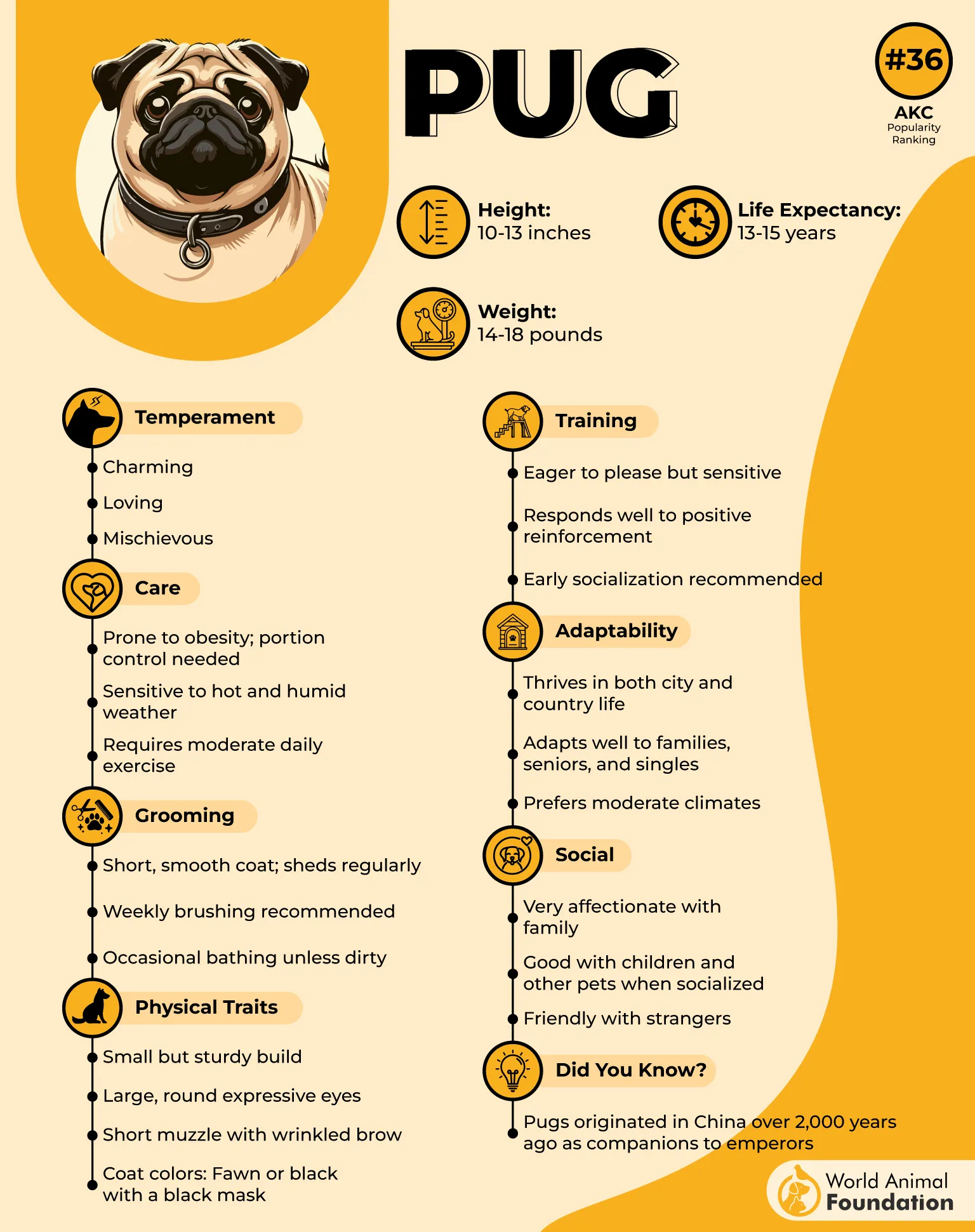
Owners often find that bath time, too, can be a bit of a battle. Pugs don’t love having water near their face, and their prominent eyes require gentle, cautious rinsing. That said, some Pugs enjoy warm, low-stress soak sessions, especially with plenty of treats and a soft towel waiting at the end.
Given their breathing sensitivities, it’s crucial to avoid hot weather swims or anything that could cause them to overexert. Short dips in cool, calm water (under supervision) may work for a few Pugs, but never force them in; it can do more harm than good, both physically and emotionally.
If your Pug is water-averse, no worries, they’re perfectly happy being your beach buddy from under an umbrella. All they need is you, a shady spot, and maybe a snack or two.
Fun Fact:
The wrinkles on a Pug’s face were once bred to resemble Chinese characters. In ancient China, they were treasured for having the “mark of the prince” on their foreheads!
4. Shih Tzu
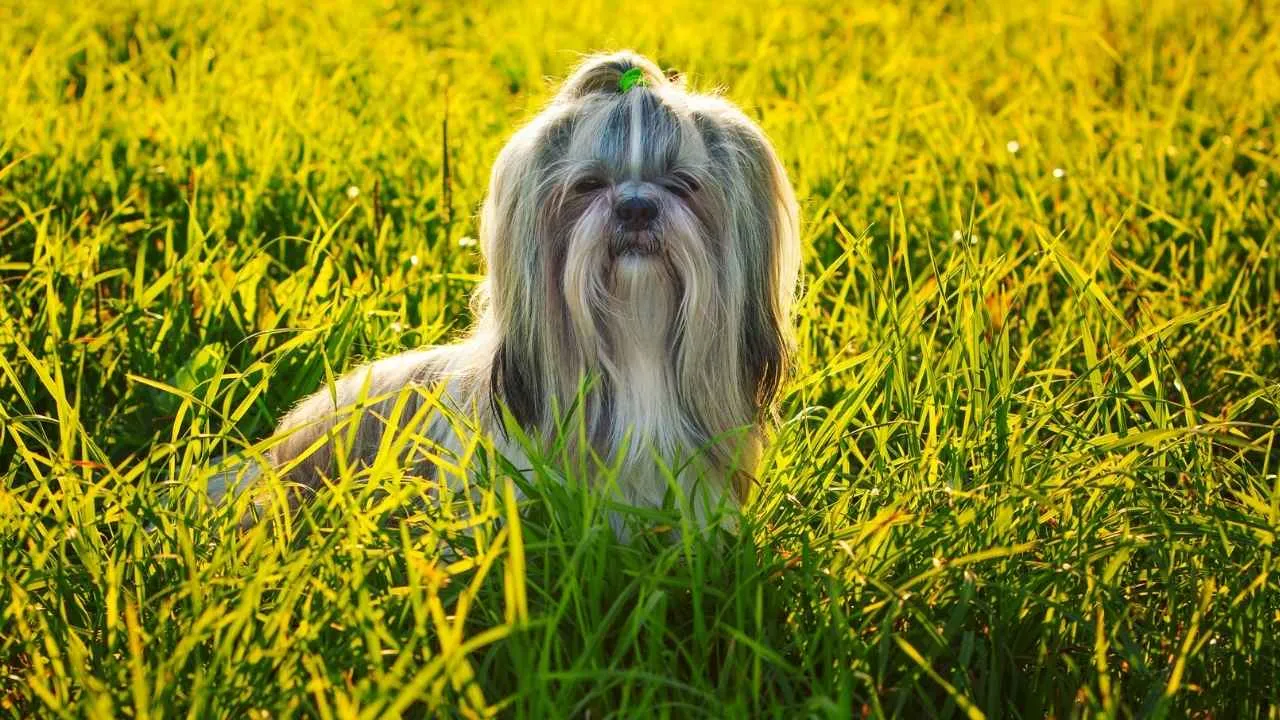
Regal in looks and often in attitude, the Shih Tzu isn’t one to leap joyfully into water. With their dense, flowing coats and short snouts, swimming is more of a hazard than a hobby. Many owners discover early on that even bathtime can be a delicate dance.
Shih Tzus aren’t naturally averse to water out of fear; rather, it’s about comfort. Their luxurious coat takes ages to dry, and their flat faces can make breathing tricky during exertion, especially in the water. Most would choose a cozy towel over a splashy adventure any day.
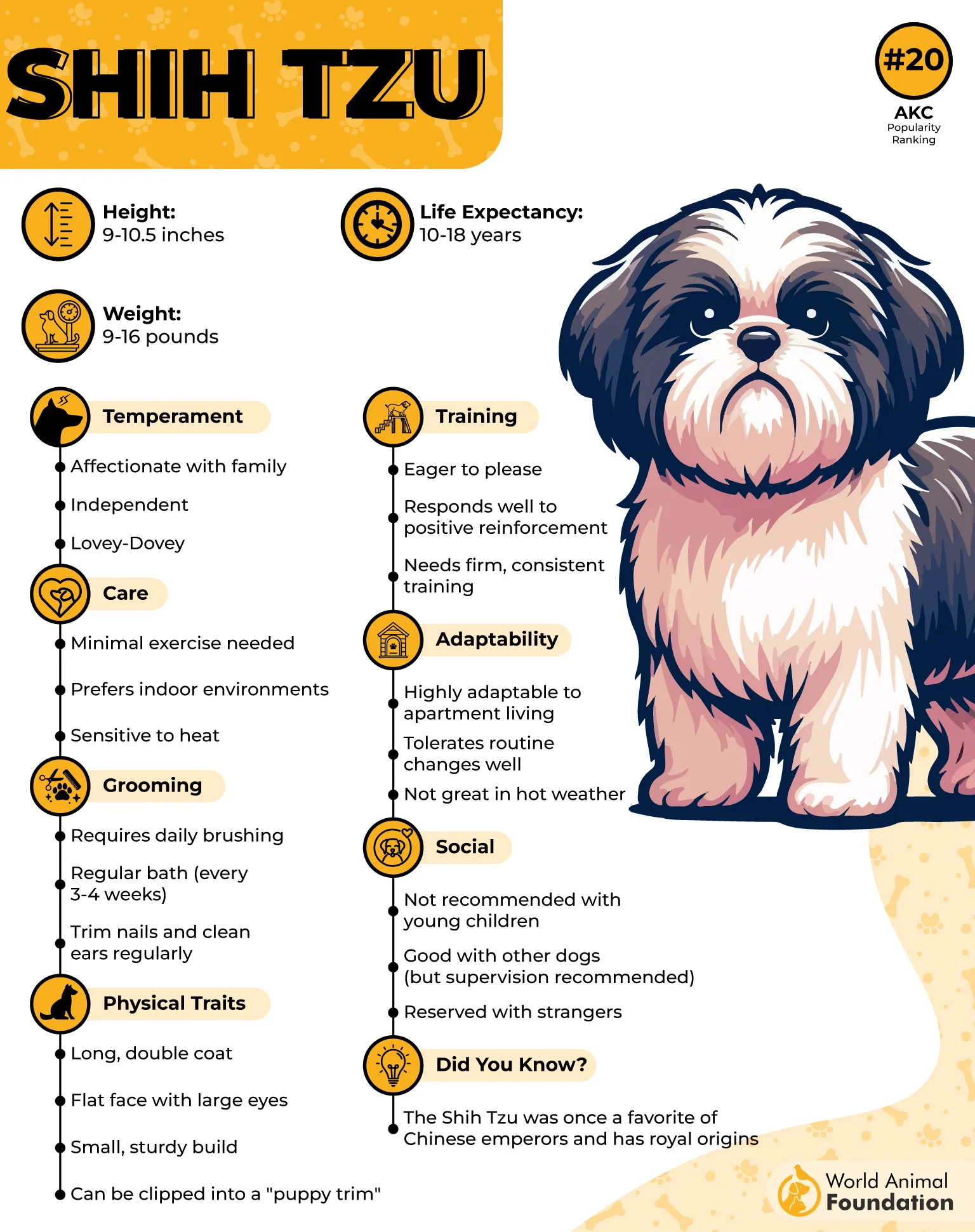
Still, if introduced gently, some Shih Tzus can tolerate water in small doses. A lukewarm tub or even a shallow kiddie pool can be manageable with patience and plenty of rewards. Just steer clear of anything involving currents or deep water; this breed does not excel in aquatic stamina.
Britannica states that they’re also sensitive to temperature changes, meaning even a chilly breeze after a swim can cause discomfort. Combine that with a coat that tangles easily when wet, and you’ve got a dog who sees swimming as more hassle than fun.
Fun Fact:
The name “Shih Tzu” translates to “lion dog” in Mandarin. But unlike their namesake, they’d much rather snooze in the shade than roam the jungle or the water!
5. Pekingese
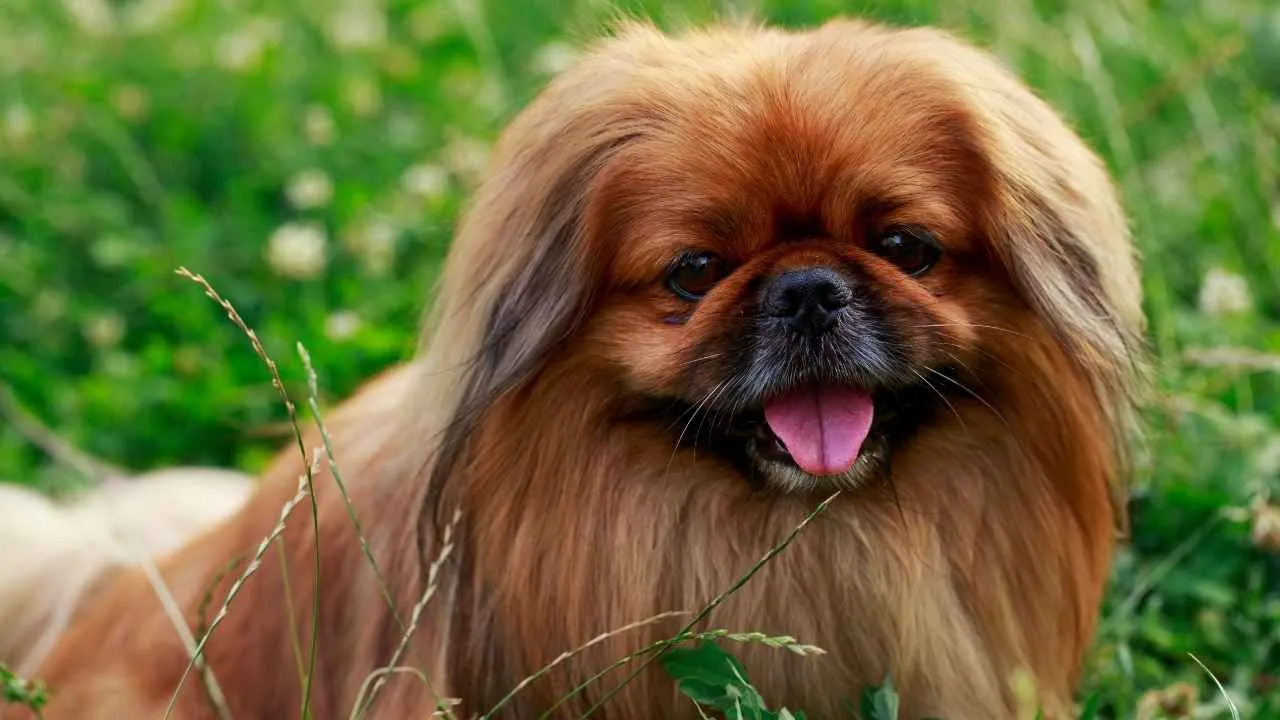
Pekingese may look like fluffy little royalty, and that’s exactly how they act, especially when it comes to avoiding water. With their compact bodies, short legs, and full coats, Pekingese were never built for aquatic adventures.
Swimming poses multiple challenges for this ancient breed. Their flattened face makes it harder to breathe during exertion, and their thick coat becomes heavy and uncomfortable when wet. Add a naturally aloof personality, and you’ve got a dog that prefers a dry throne over a dive.
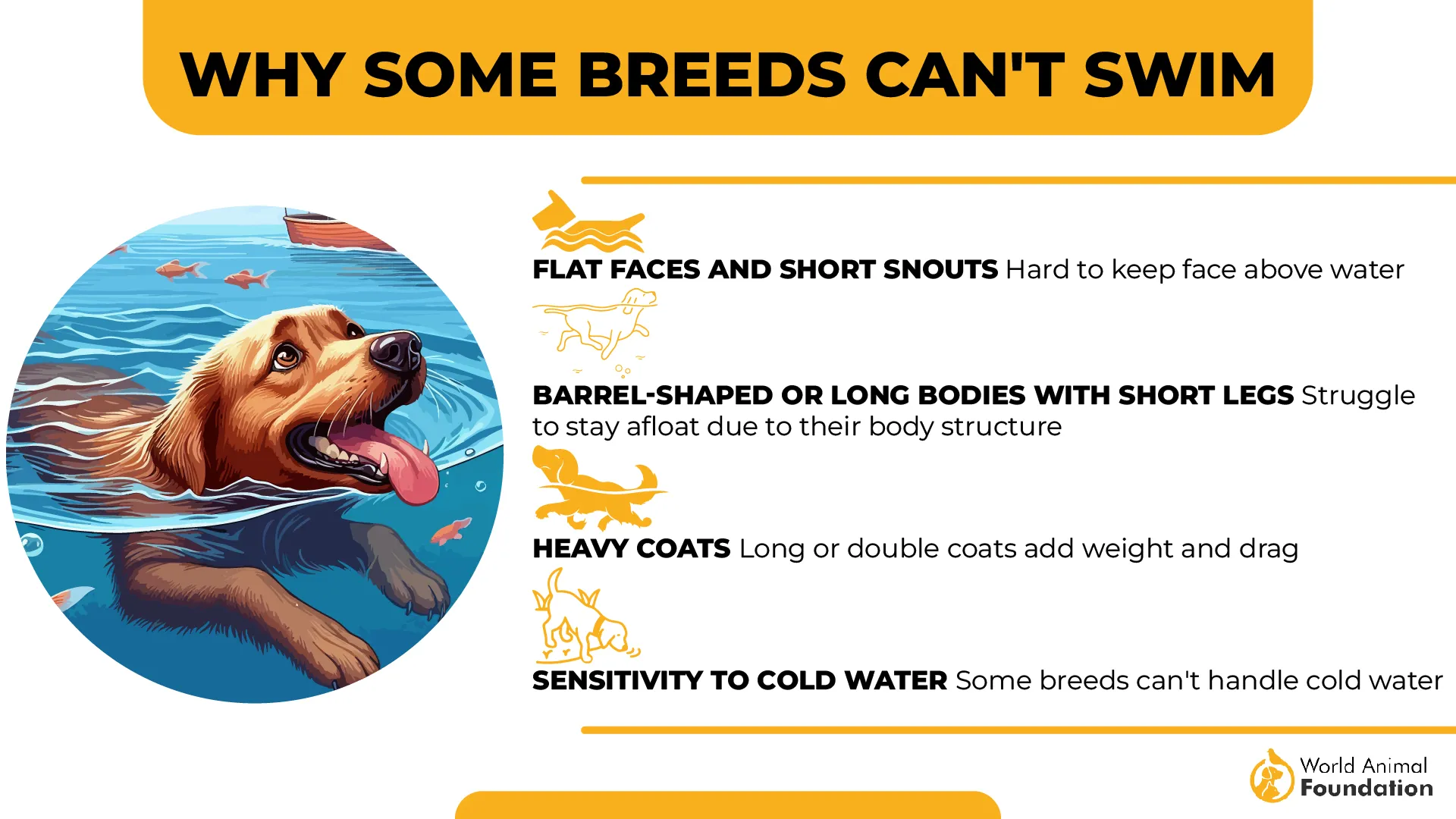
In fact, many Pekingese will firmly plant their feet when faced with the prospect of a bath. Owners often have to coax them into water with calm encouragement and treats—and even then, a splash might earn them a look of royal betrayal.
Their compact build also means they can tire quickly in water, making swimming potentially risky. That said, a relaxing paw soak or a gentle sponge bath might be the extent of what they’ll tolerate, provided the temperature is perfect and the towels are plush.
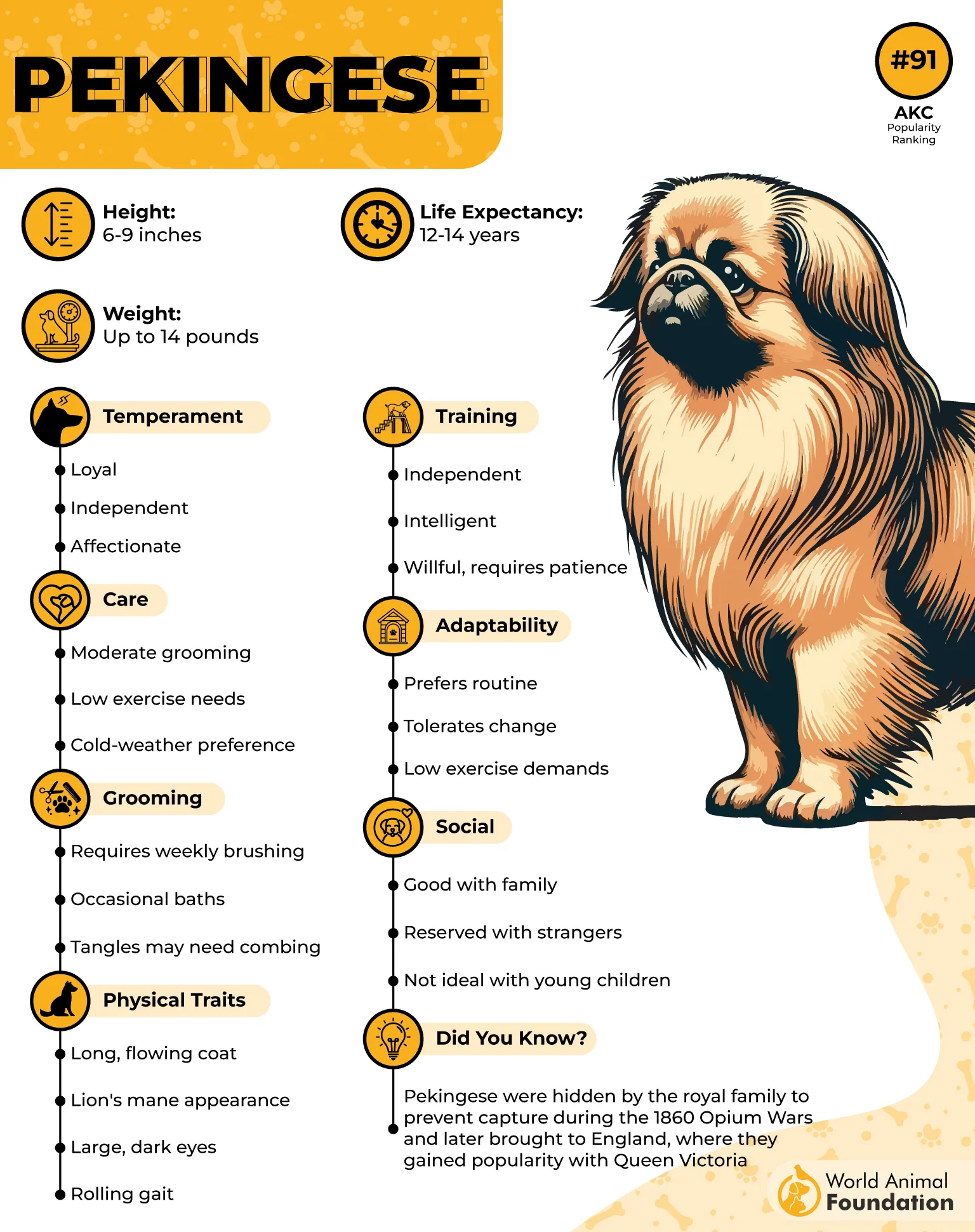
For this breed, comfort and calm are everything. A clean, dry coat and a soft bed? Yes. A trip to the lake? Not unless you’re just there to people-watch.
Fun Fact:
Pekingese were bred to resemble Chinese guardian lions and were once carried inside the sleeves of emperors’ robes!
6. Boxer
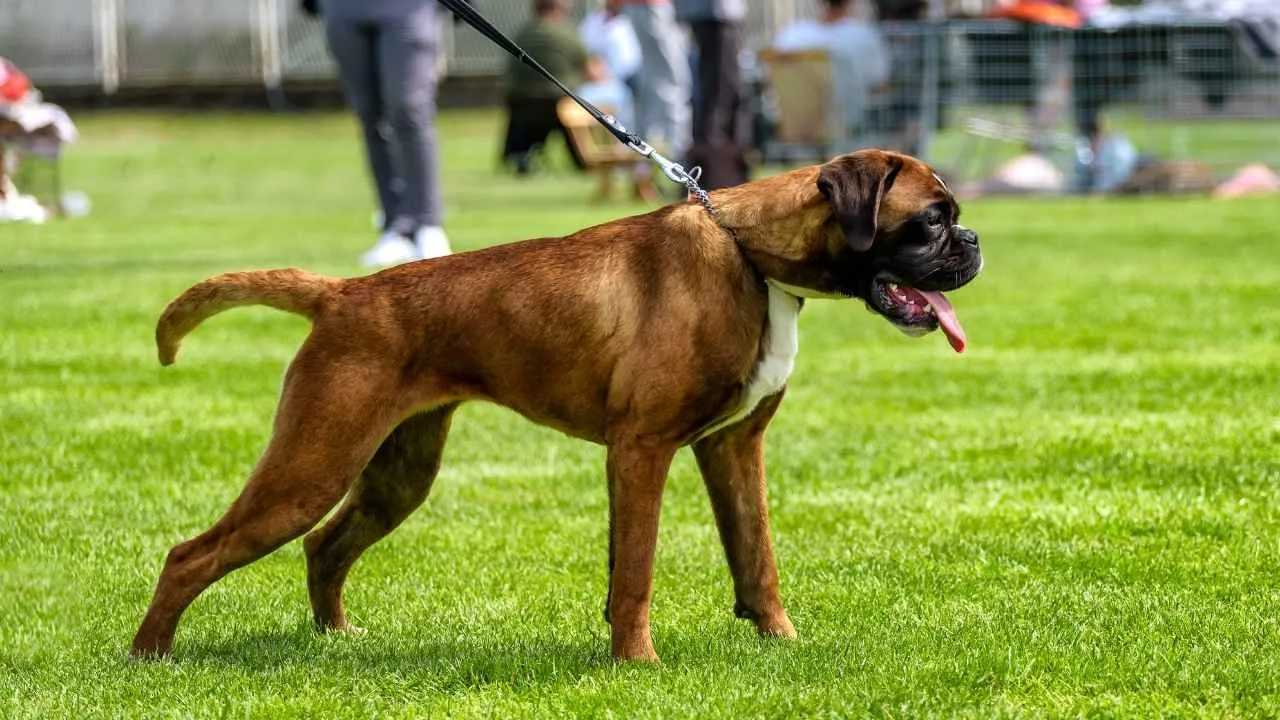
Boxers are bundles of athletic energy—but surprisingly, many don’t love getting wet. While they enjoy a good romp outdoors and will chase a sprinkler stream or bite at the hose, actual swimming? That’s a different story.
Some Boxers can be hesitant around deep water or even large bathtubs. Their muscular build and slightly top-heavy posture don’t lend themselves well to graceful swimming, and they can get anxious if they don’t feel stable or confident in the water.
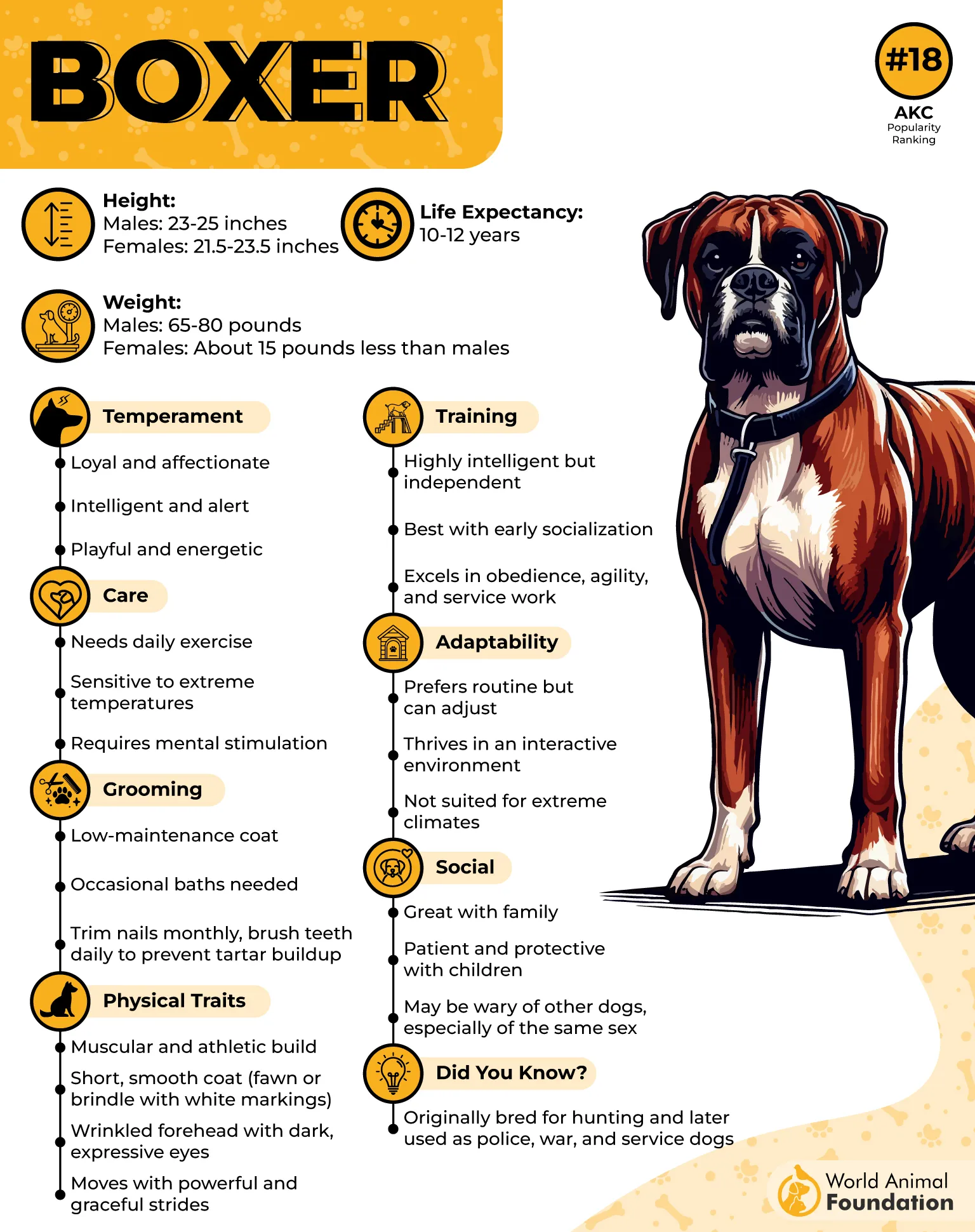
Boxers are playful and curious, which can sometimes overcome their water aversion—but only in shallow, controlled environments. A few splashes, maybe a paw in the water, but full-on swimming sessions are rare unless they’ve been gently trained from puppyhood.
If your Boxer does venture into water, supervision is key. Their short muzzle can lead to breathing difficulties during strenuous activity, especially in warm weather. Life jackets and positive reinforcement can help build confidence, but patience is a must.
At the end of the day, most Boxers would rather play fetch on dry land or sprawl belly-up in the sun than do laps in a pool.
Fun Fact:
The Boxer gets its name from its playful habit of batting at objects (and people!) with its front paws—like a boxer in the ring!
7. Maltese
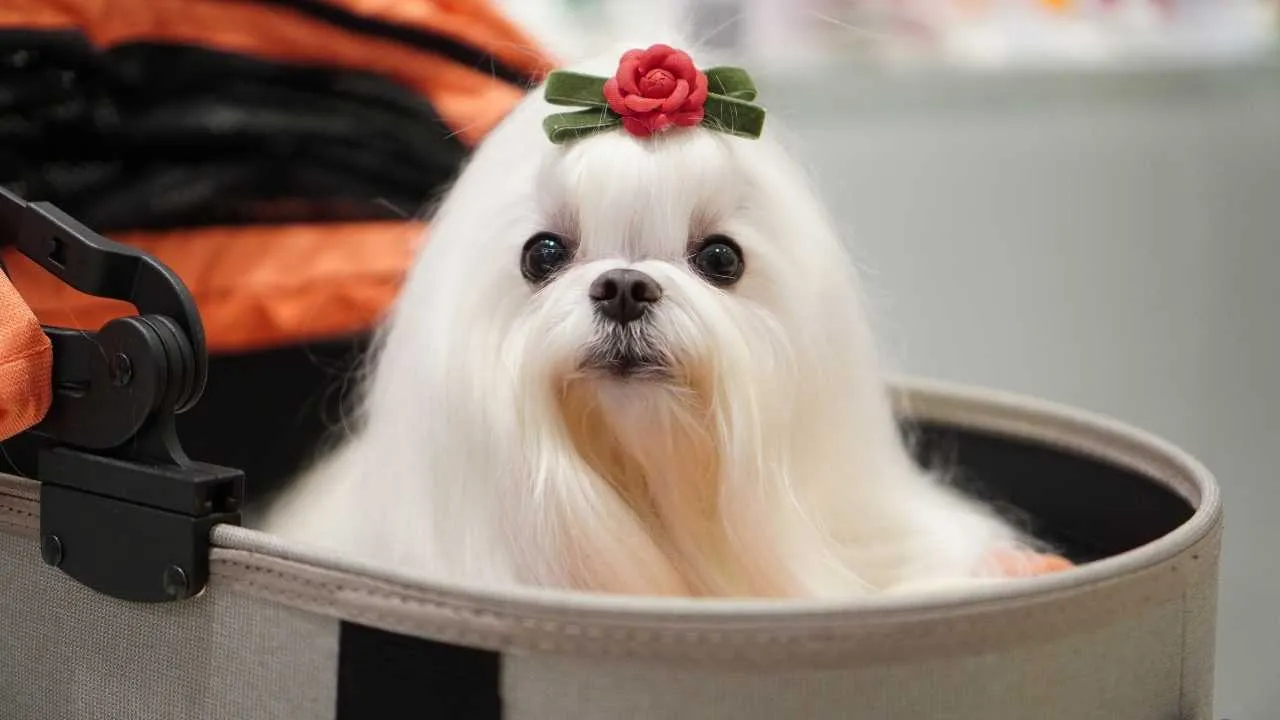
With their snow-white, flowing coats and aristocratic charm, Maltese dogs give off serious “keep me dry” vibes. Water weighs down their fine fur, making them cold and uncomfortable, and let’s be honest, few things upset them more than a ruined blowout.
Maltese can be sensitive to temperature and texture, and many simply don’t like the sensation of wet paws. Pools, lakes, and even rainy sidewalks can elicit dramatic resistance. They much prefer watching from a warm lap or sunny patch on the patio.
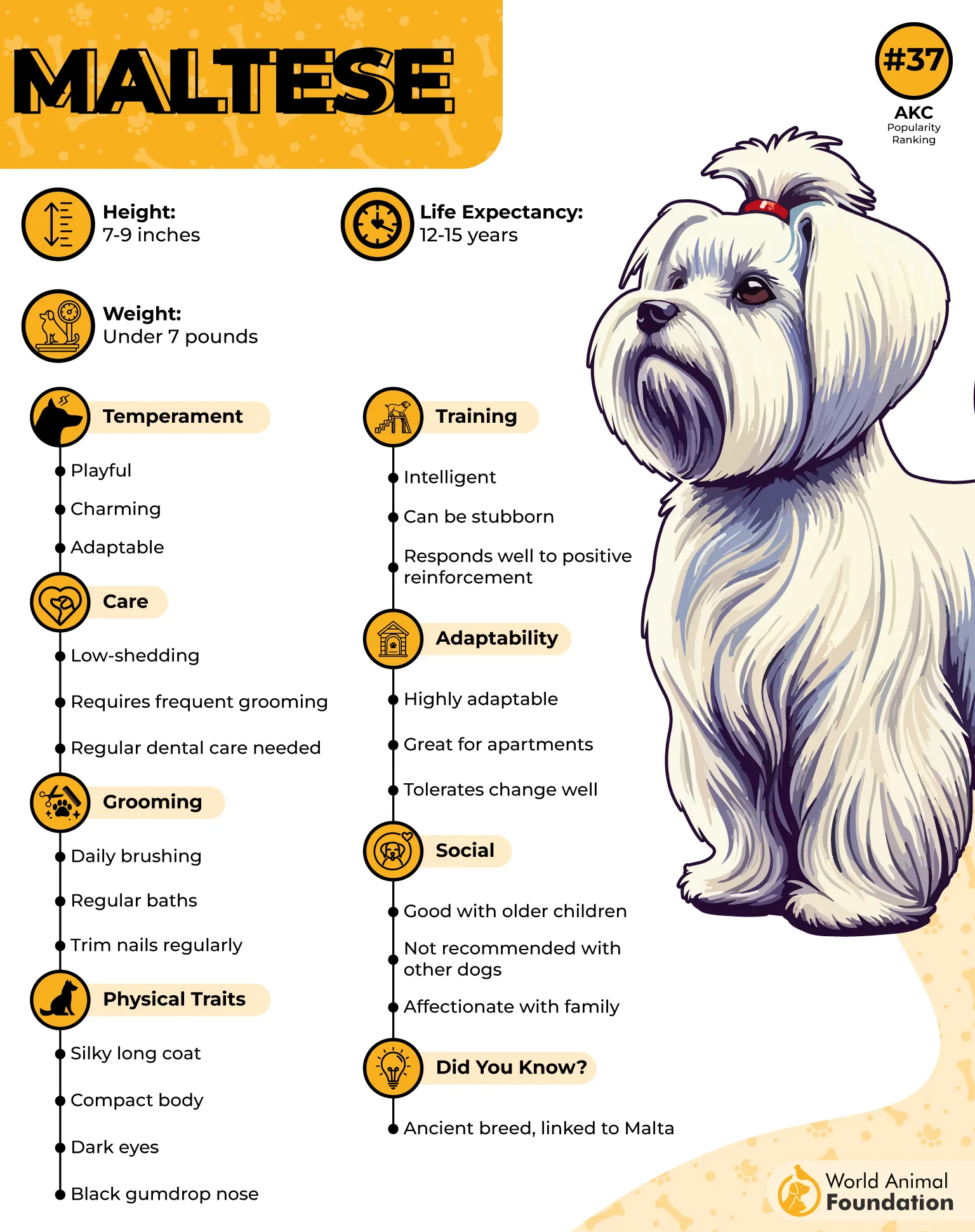
Though some Maltese may tolerate water if introduced early, their fragile size and grooming needs often deter owners from encouraging swimming. Instead, a warm bath and gentle rinse, followed by an hour of brushing and drying, is about as aquatic as things get, as suggested by Hill’s Pet.
Their coat can easily mat when wet, and leftover moisture around the ears and paws can cause irritation or infection if not dried properly. For many Maltese owners, avoiding unnecessary splashes is part of routine care.
So while they may look like elegant little sea nymphs, most Maltese would be happier curled up in a beach bag than paddling in the ocean.
Fun Fact:
The Maltese is one of the oldest known dog breeds, dating back over 2,000 years. They were favored lapdogs of Roman aristocrats and were even believed to have healing powers!
Conclusion
While Golden Retrievers and other natural swimmers take to water with ease, many small dogs or flat-faced breeds like Pugs and Shih Tzus prefer to keep their paws dry. Their body structure, breathing challenges, or simply their personality can make water feel more scary than fun.
If your dog isn’t a fan of swimming, don’t force it. Focus on water safety, never leave them unsupervised, watch for signs of panic or fatigue, and use a life vest when needed. Always start slow, and bring along a favorite treat or toy to keep things positive.
Even if your pup never becomes a confident swimmer, that’s okay. A happy dog on land is better than a panicked one in the water. Keep things gentle, safe, and tailored to your dog’s comfort level, and they’ll thank you for it.


